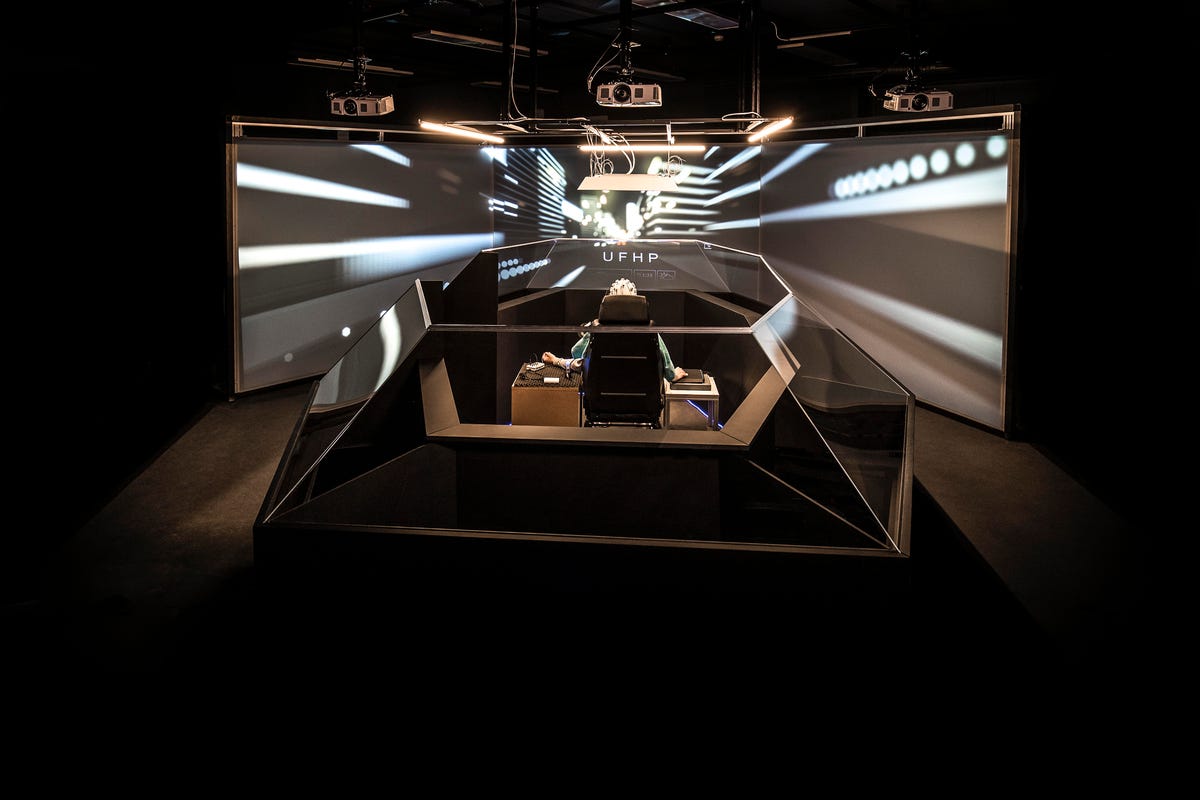
Audi wired up 30 millennials to see how they react to different stimuli to enhance future self-driving cars.
A basic cabin is surrounded by windows featuring integrated displays, as well as a larger, room-sized array of screens that simulate driving in a self-driving commute.
Participants were wired with EEG caps and GSR sensors to measure their responses.
Scientists varied including background noise levels, light, and so on to gauge subjects' reactions.
Audi believes massive levels of in-car advertising are a given in our self-driving future, and it views its cars as a membrane to filter out things occupants don't care about.
This isn't creepy at all.
Nope.
(Apparently special liquids are used to enhance the brainwave-measuring EEG cap's connectivity).
GSR finger sensors are applied.
Test subjects were tasked with simple brain tests that included answering questions, memorization drills and so on.
It's easy to imagine that this will look absurd when self-driving cars become commonplace years from now.
Audi worked with the Fraunhofer Institute in Stuttgart on this research.
Continue clicking or swiping through for more images of Audi's 25th Hour project.
At the laboratory experiment at the Fraunhofer Institute in Stuttgart the galvanic skin response was measured (GSR).
Fraunhofer Institute experts on human-machine interaction measure brain activity (EEG)

